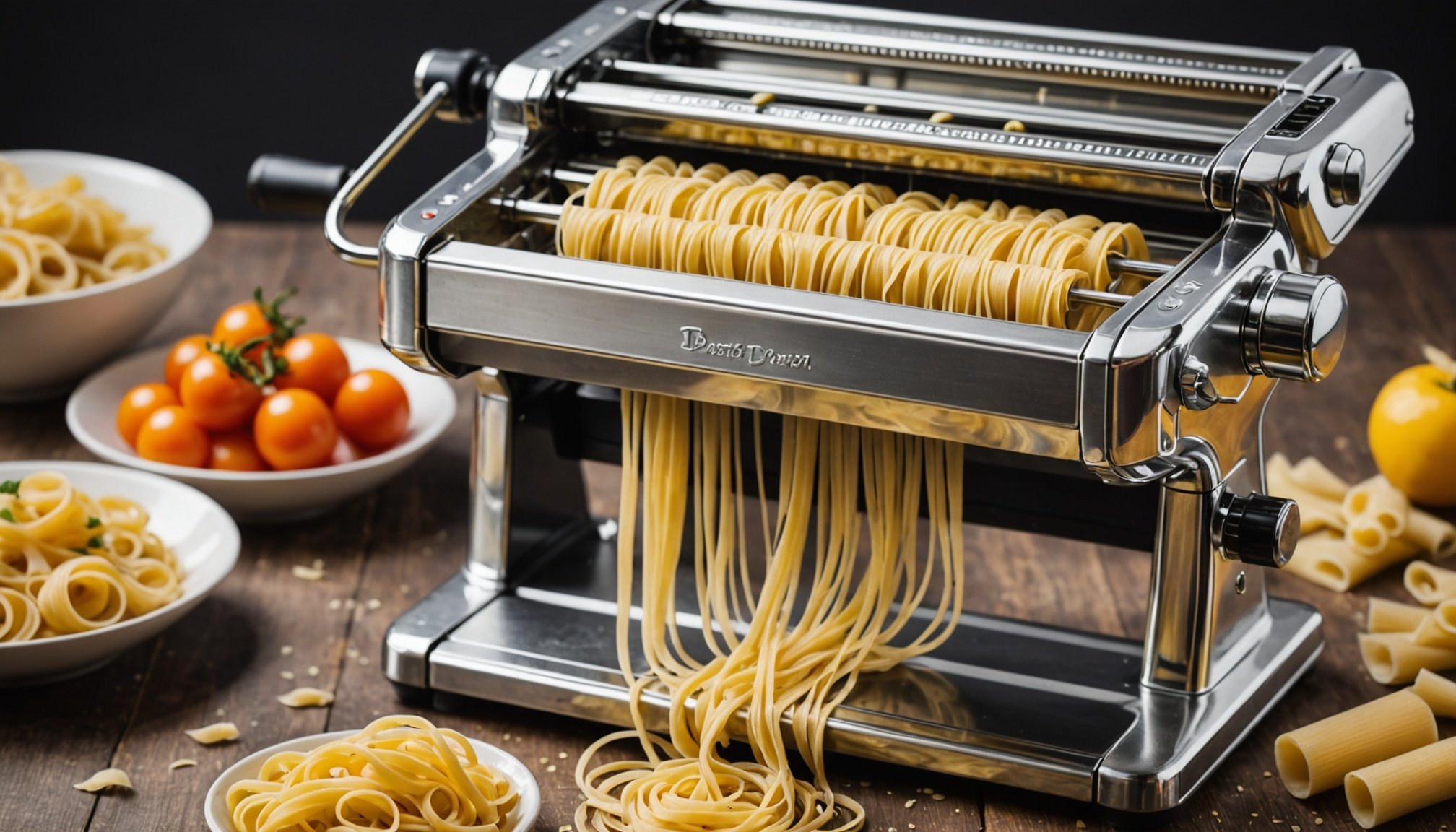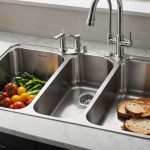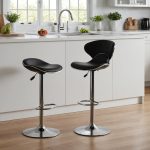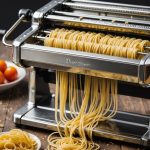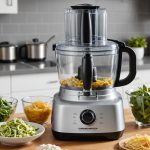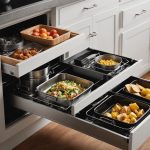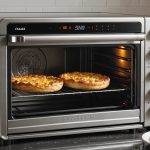Choosing the right pasta maker can transform your homemade noodle experience. With countless options on the market, understanding essential features will guide you to a perfect match. Consider factors like dough width, material quality, and ease of use. These elements not only enhance the process but also impact the texture and shape of your noodles. Unlock the secrets to creating restaurant-quality pasta by knowing what to prioritize when selecting your kitchen companion.
Key Features of Pasta Makers
Understanding the essential features of a pasta maker can significantly enhance your selection process. Construction quality and materials play a pivotal role in durability. Opt for stainless steel models, as they resist rust and wear better than plastic alternatives.
Additional reading : Essential Features to Look For in a Versatile Food Processor for All Your Kitchen Needs
Construction Quality and Materials
- Stainless steel for durability
- Plastic for lightweight and affordability
- Aluminum for a balance of both
Adjustable thickness settings are crucial for achieving the desired pasta texture. They allow you to create various pasta types, from lasagna sheets to spaghetti, with precision. Look for models offering multiple thickness options to maximize versatility.
Adjustable Thickness Settings
Consider the differences between motorized and manual options. Motorized pasta makers offer convenience and speed, ideal for those who frequently make pasta. In contrast, manual models provide more control and a traditional experience, which some enthusiasts prefer. Assess your needs to determine which type suits you best.
Also read : Essential Features to Look For in a Versatile Food Processor for All Your Kitchen Needs
Motorized vs. Manual Options
- Motorized: Fast and convenient
- Manual: Traditional and controlled
- Hybrid: Combines features of both
When selecting a pasta maker, prioritize these essential features to ensure a satisfying culinary experience. By focusing on construction quality, adjustable thickness settings, and the choice between motorized and manual options, you can make an informed decision that aligns with your culinary goals.
Comparative Analysis of Popular Pasta Maker Models
Understanding the landscape of pasta maker comparison is crucial for making an informed choice. Let's delve into an overview of leading brands to identify the best options available.
Marcato Atlas 150 is renowned for its robust construction and versatility. This manual model, made from high-quality stainless steel, offers adjustable thickness settings and a traditional pasta-making experience. Users appreciate its durability and consistent performance.
Philips Pasta Maker is a motorized option praised for its convenience and speed. It automates the process, allowing users to make fresh pasta in minutes. However, some note that it lacks the artisanal touch of manual makers.
Imperia Pasta Maker combines elements of both manual and motorized models, offering a balanced approach. Its hybrid design provides flexibility, making it a popular choice among enthusiasts.
Pros and Cons of Each Model
Understanding the pros and cons of each model can help you decide:
- Marcato Atlas 150: Durable, traditional; requires manual effort
- Philips Pasta Maker: Fast, convenient; less artisanal
- Imperia Pasta Maker: Flexible, hybrid; may lack specialized features
These insights into pasta maker comparison and model reviews provide a solid foundation for selecting the perfect pasta maker to suit your needs.
Cleaning and Maintenance Considerations
Ensuring the longevity of your pasta maker involves understanding the nuances of cleaning and maintenance. These aspects are crucial for maintaining performance and hygiene.
Ease of Cleaning Various Models
Different pasta makers have varying levels of ease of cleaning. Manual models often require careful brushing to remove dough residues, while motorized models might feature detachable parts that simplify the process. Always consult the manufacturer's guidelines to avoid damaging the machine.
Recommended Cleaning Methods
To effectively clean your pasta maker, use a soft brush or cloth to remove any remaining flour and dough. For stainless steel models, avoid using water, as it can cause rust. Instead, opt for dry cleaning methods. Plastic components can often be wiped with a damp cloth, but ensure they are thoroughly dried before reassembling.
Maintenance Tips for Longevity
Regular maintenance is key to extending the life of your pasta maker. Lubricate moving parts with food-safe oil to prevent wear and tear. Store the machine in a dry place to protect it from moisture. Additionally, periodically check for any loose screws or components and tighten them as needed.
Maintenance tips and proper cleaning not only ensure your pasta maker's longevity but also guarantee a consistently delightful pasta-making experience.
Additional Attachments and Accessories
Exploring the world of pasta maker accessories can greatly enhance your culinary creativity. These additions transform your pasta maker into a versatile cooking tool.
Types of Attachments Available
Attachments vary widely, offering unique functionalities to expand your pasta-making repertoire. Common pasta maker accessories include:
- Ravioli attachments: Create perfectly filled pasta pockets.
- Cutting rollers: Produce diverse pasta shapes, from fettuccine to tagliatelle.
- Lasagna sheets: Achieve uniform thickness for layered dishes.
These accessories allow for a broader range of pasta styles, catering to different tastes and preferences.
Benefits of Using Accessories
Utilizing pasta maker accessories provides numerous advantages. They increase the versatility of your machine, allowing you to experiment with various pasta types. Additionally, these accessories can save time and effort, streamlining the pasta-making process. By investing in quality attachments, you can enhance both the functionality and longevity of your pasta maker, ensuring a more satisfying cooking experience.
Compatibility with Different Pasta Makers
Not all pasta maker accessories are universally compatible. It's essential to verify that attachments fit your specific model. Manufacturers often design accessories tailored to their machines, ensuring optimal performance. Checking compatibility before purchasing can prevent potential issues and ensure seamless integration with your pasta maker.
Tips for Achieving Perfect Noodle Texture
Unlock the secrets to perfect pasta with these essential tips.
Importance of Ingredient Quality
The journey to perfect noodle texture begins with high-quality ingredients. Opt for semolina flour or 00 flour for a smooth, elastic dough. Fresh eggs enhance the dough's richness and color. Remember, the quality of your ingredients directly influences the final product.
Techniques for Proper Dough Mixing
Proper mixing techniques are crucial. Start by creating a well in the flour, adding beaten eggs gradually. Use a fork to incorporate the flour slowly, ensuring even distribution. Knead the dough until it's smooth and elastic, which typically takes about 10 minutes. This step is vital for achieving the desired noodle texture.
Cooking Tips for Optimal Noodle Texture
Cooking your noodles correctly is the final step. Use a large pot of salted water to prevent sticking. Once the noodles float, they are usually done. For a perfect noodle texture, consider the following:
- Al dente: Firm to the bite, ideal for most pasta dishes
- Soft: Longer cooking for a tender texture
- Chewy: Slightly undercooked for a firmer bite
These tips ensure your pasta is cooked to perfection, enhancing your culinary creations. Always taste test to achieve your preferred noodle texture.

